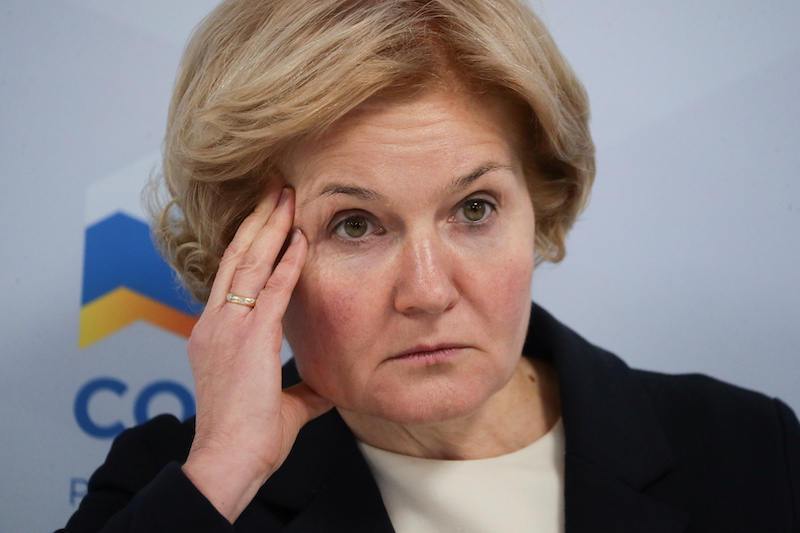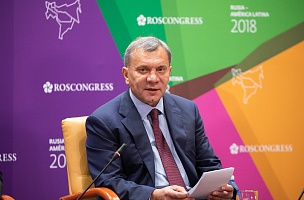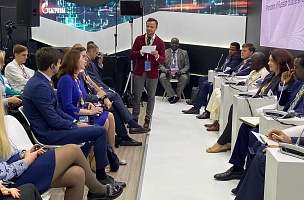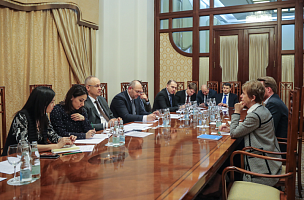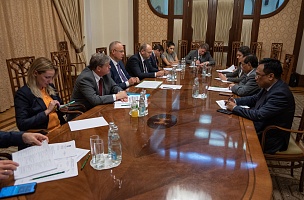KEY CONCLUSIONS
The tourism industry is demonstrating steady growth
“Each year, the tourism industry adds a certain amount of interest. Over the last year, it was almost 15%. The domestic tourism flow already totalled 60 million people. Inbound tourism to the Russian Federation is just over 24 million”, Russian Deputy Prime Minister Olga Golodets said.
“We must not miss out on the wave of the World Cup legacy. These opportunities need to be used in the most concentrated way possible”, Federal Tourism Agency Head Zarina Doguzova said.
Infrastructure development drives tourism
“Any infrastructural changes or transport changes immediately lead to an increase in the flow of tourism. Thanks to the introduction of the Crimean Bridge, we see how much the flow of tourism has increased to the Republic of Crimea over the last year – by 29%. Crimea was the fifth ranked region in the Russian Federation in terms of the number of winter visits [...] We can see another example of how the flow of tourists is changing following changes in infrastructure. The Ivanovo Region increased its tourism flow by 22% during the New Year’s holidays due to concrete decisions. This is because of new railway transportation, which reduced travel time”, Golodets said.
The industry’s development is based on public-private partnership
“The tourism industry is the most fertile due to the combination of private and public money. For each rouble, our programme gets 2.7 roubles from the private sector”, Golodets said.
Original ideas are an industry growth driver
“Twenty years ago, the idea arose to put Father Frost’s residence [in Veliky Ustyug]. Each year, Veliky Ustyug sees a 20–30% increase in the number of tourists. The number of hotels has increased by 40 times, the number of restaurants has grown by 25 times, and the number of items on display has increased by several dozen times”, said Oleg Kuvshinnikov, Governor of the Vologda Region and Chairman of the Healthy Cities, Districts, and Villages Association for the Improvement of People’s Health and Quality of Life.
PROBLEMS
Underdeveloped infrastructure
“As for constraints, there is a disastrous lack of investment in infrastructure. For comparison’s sake, with revenue of roughly RUB 100 billion in the industry per year, we have state investments of around RUB 1 billion”, Russian Deputy Minister of Economic Development Sergey Galkin said.
“The aviation cluster is where we are losing to our Finnish neighbours”, Head of the Republic of Karelia Artur Parfenchikov said.
Shortcomings in the regulatory framework for investment control
“We need to identify a kind of boxed solution in which a private investor can invest in this federal target programme. During checks, we found that a private investor built a private dealership centre, and we pulled brought him infrastructure at the state’s expense”, Russian Accounts Chamber Auditor Mikhail Men said.
“We need to expand the powers of the Accounts Chamber because, according to the existing regulations, it cannot go to a site and conduct an audit [...] Over the previous period, roughly RUB 25 billion have been spent. It’s impossible to estimate the efficiency of how these funds are spent”, said Sergey Krivonosov, Deputy Chairman of the State Duma Committee on Physical Culture, Sport, Tourism, and Youth Affairs.
“Budget money goes down the drain if 80% of all federal target programmes fail. What infrastructure is being created if it isn’t coordinated with anyone”, Sberbank Deputy Chairman of the Executive Board Stanislav Kuznetsov said.
Underdevelopment of investor support tools
“One of the problems is the low profit margin of the tourism business. When you calculate it professionally, the profit margin ranges from 1% to 5%”, Leningrad Region Governor Alexander Drozdenko said.
“The concessional lending programme, unfortunately, is not working as we would like. You know that there was a programme at 6.5%, now it is at 8.5%. The investments have been coming back for about 10 years, and, of course, this is not entirely effective”, Krivonosov said.
“Business has seen a catastrophic increase in costs, and we are all adding to the product. And we are becoming uncompetitive. As a result, Sochi and Crimea are starting to lose out to Turkey [...] The resort tax and its administration have been shifted onto the shoulders of business”, Alexey Kozhevnikov, Vice President of the All-Russian Non-Governmental Organization of Small and Medium-Sized Businesses OPORA RUSSIA.
“For some reason, when we discuss tourism, speeches are often more emotional than technocratic. In order for us to win [...], we must take a technocratic approach to this industry [...] We must count the flows. We must count the value and the cost of money for the investor. We must count all the guarantees or risks that are present in each of these projects”, Rosa Khutor General Director Sergey Bachin said.
SOLUTIONS
Identifying priorities
“You can create a tourism product from Russia that can satisfy any demand as a promising unique tourist destination”, Doguzova said.
“Russia is a huge country, but its resources are limited. There is no way to develop all 85 regions at once. We have to look at ourselves and say – here are 20 regions and in the coming years we are only going to work on them”, Bachin said.
“The most important component is the price-quality ratio of the tourist product”, Krivonosov said.
Increasing investment efficiency
“The Federal Agency for State Property Management needs to have the ability to clearly analyse these investments and the ability to see that these 3 roubles are clearly invested within the framework of the goals that the country faces [...] If the state has built utilities for a certain building spot, that means that a hotel or a restaurant have been built there [...] This should be clearly formulated”, Men said.
Enhancing the level of interagency and interregional collaboration
“A new Tourism Council is currently being formed. The Council will be very specific. I call for expanding it. Let's take a break for two weeks so that our colleagues who want to declare something can do so”, Golodets said.
“As for the model, it should include an interagency component because tourism is not actually a single industry, but an assembly of elements from various industries. And here interagency collaboration is a key element of success”, Galkin said.
Development of financial incentive programmes for investors
“We came up with the ‘Green Corridor for Tourists’ programme. It’s a green corridor for business. We have developed a whole system of benefits: they include tax breaks, a reduction in the service delivery time, support for investment projects, and free connection to utilities”, Drozdenko said.
“There is a very good example without our country of how to make an industry a leader. If we make the state support structure similar to the one that currently exists in agriculture, then I guarantee you that in 15 years we will have two sectors that we will be proud of – agriculture and tourism”, Bachin said.


